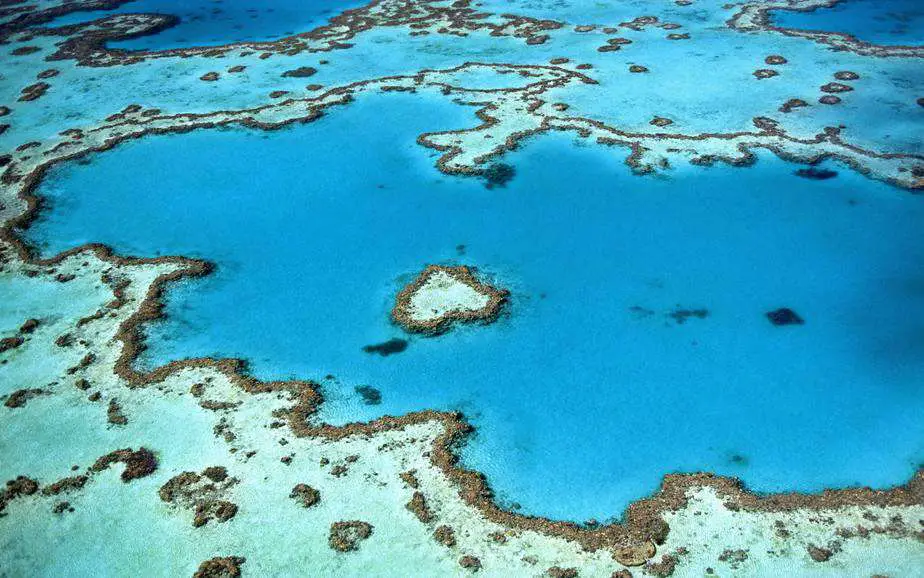When people think about scuba diving in Australia, they are usually thinking about diving in the Great Barrier Reef, the largest coral reef system in the world. You might think it’s one big reef, but it actually comprises 3,000 smaller reefs and 600 islands. Australia is a vast country as well, and there are enough unique dive sites that it can occupy a diving enthusiast for years. However, Australia is also notorious for being home to some of the world’s deadliest animals, so many are wondering if it’s safe to scuba dive in Australia.
Despite the country’s reputation for dangerous animals, at least when it comes to scuba diving, Australia isn’t more dangerous than any other country. Due to the sprawling diversity of dive locations, it’s true that some locations are more challenging than others. However, if you exercise good judgment and follow the safety protocols, then you will be fine. Don’t go to a challenging dive site if you’re a beginner and unprepared, listen to your dive guide, talk to the locals, do your own research, etc., and your knowledge will keep you safe.
By being sensible and staying within your limits, you’ll find that the waters of Australia are not any more risky than the waters in other popular locations like Southeast Asian countries or popular states like Hawaii and Florida. However, what you can expect to find in the waters in terms of marine life and environments will blow you away. Here’s how you can enjoy exploring these underwater wonders that Australia has to offer safely.
Is diving in Australia more dangerous than elsewhere?
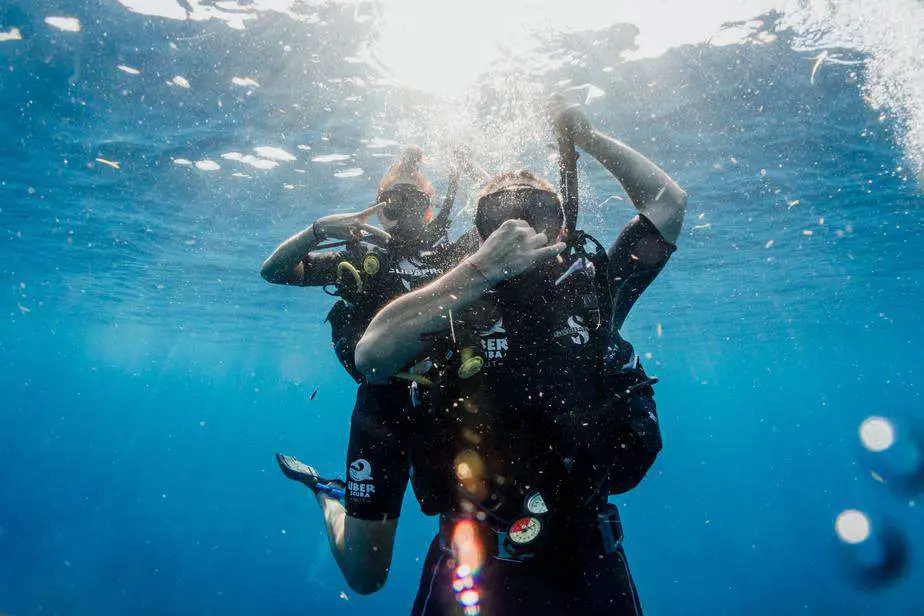
Australia is a large country filled with exotic and dangerous animals, and if you’ve seen even one episode of The Crocodile Hunter, you’ll think: “Crikey! I don’t know if I want to go there.”
How about diving in the Great Barrier Reef? The host of the aforementioned show, Steve Irwin, tragically lost his life when a stingray barb pierced his heart when he was snorkeling in the Great Barrier Reef. This incident perhaps has made the Great Barrier Reef and stingrays quite infamous as a potentially dangerous location to dive. Before booking a trip of your lifetime to Australia, you are very prudent to look up your concerns.
Despite its reputation, we believe diving in Australia is no more dangerous than diving anywhere else. There are not any specific dangers that divers need to pay attention to in Australian waters. The same dangers and risks you’d encounter in Australia are encountered in the United States as well. So if you feel safe diving in the US, there’s no reason to fear diving in Australia.
We can make this claim confidently because the Australian diving industry is exceptional. The Great Barrier Reef is a worldwide attraction and has helped the tourism industry in Australia thrive. Knowing this, they have developed, managed, and regulated the industry very well. One might even make the argument that diving in the main tourist attractions in the GBR is even safer than comparable international diving destinations.
The authorities that oversee and enforce the regulations are the Australian Underwater Federation and the Australian Marine Parks. They work tirelessly to ensure the industry maintains high safety standards so that tourists will want to keep coming.
Despite us saying that there are no specific diving risks that Australia presents, there are still some things you should know about Australia to better prepare you for diving there.
Australia’s wide range of dive sites
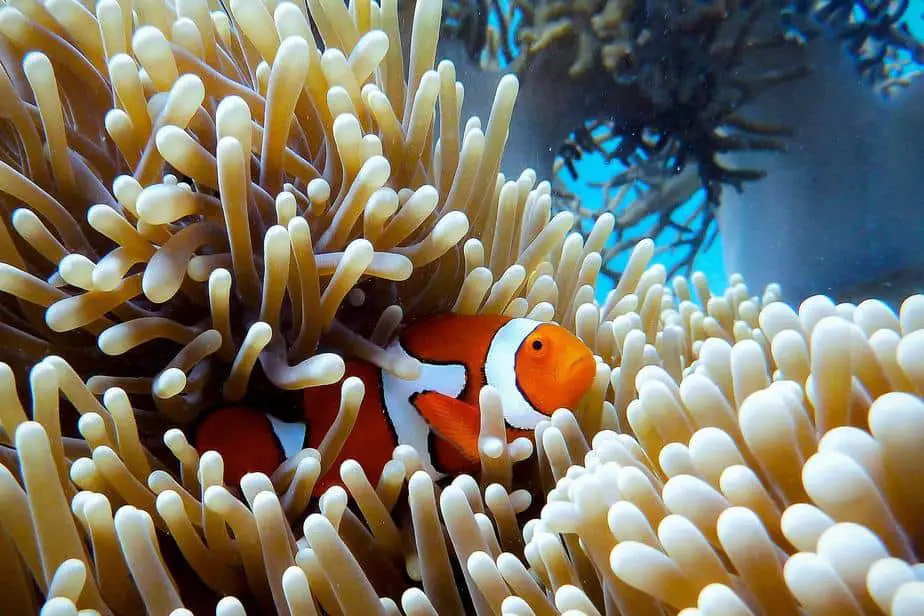
When considering the vastness of the Great Barrier Reef, there are simply too many options to choose from. A good way to narrow it down is by difficulty of the dive site. If you want to stay safe, you should stay in calm waters near the beach. More advanced scuba divers will want to brave the expert level locations.
Regardless of what level of diver you are, everyone needs to be honest about their own scuba diving skill. They must consider their own fitness, health, and the weather conditions.
Some easy and safe starting locations are Fitzroy Island, Pumpkin Island, and Lady Elliot Island. You can take advantage of the scuba diving tour companies to give you a guided tour. The dive guide will show you the best sights while carefully helping you navigate the unfamiliar environment.
Availability of first responders in remote locations
Due to Australia’s vast territory, you have numerous possibilities to dive in remote areas that are exotic but also riskier due to the limited quick access to emergency services.
Depending on the country, the availability of first responders may be limited, and even in popular tourist attractions, you may be let down. Not so in Australia.
Unsurprisingly, in a country where everything is trying to kill you, you can expect above average response times to emergency calls. If you’re diving sensibly and following the protocols, then you ideally will never need to make the call in the first place.
Accidents in popular tourist sites
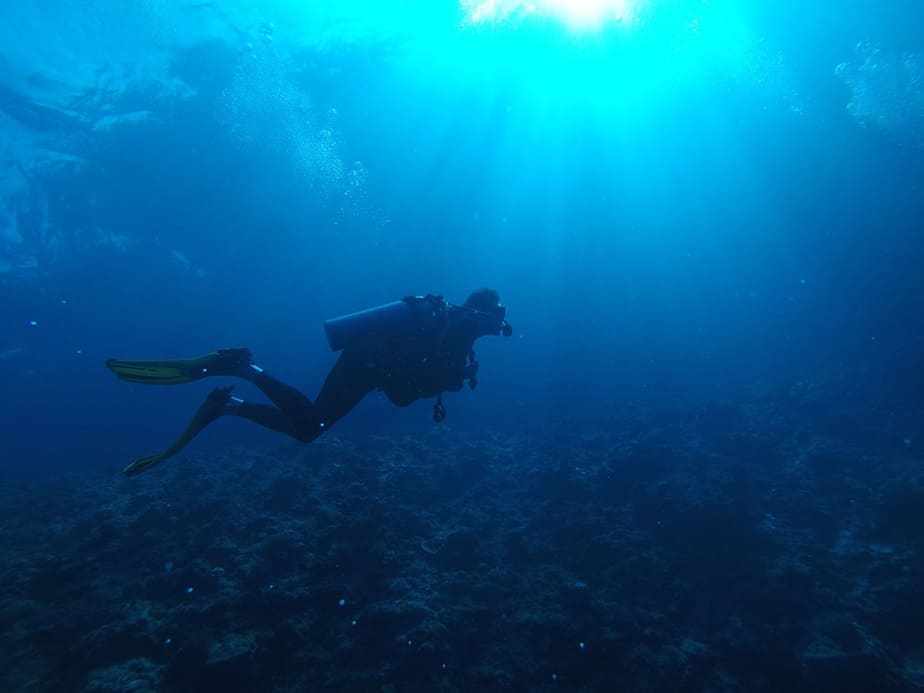
Though this article is focused on scuba diving, many tourists head to Australia’s reefs so that they can swim, snorkel, surf, and all kinds of other water activities.
A morbid fact is that the more people there are doing an activity, the greater the number of reported accidents or deaths. As such, the GBR may give off the perception that it is more dangerous than other locations in the world, but this is owing to the sheer number of people that take the risk to enter the water.
In fact, to bolster the GBR’s safety protocols, a new safety code has been implemented which forces “at-risk” swimmers to wear life vests. Naturally, this doesn’t apply to divers, but that’s what the medical form is for.
It’s the responsibility of all scuba divers to prepare themselves as much as possible for their excursion. You wouldn’t expect to climb Mt. Everest without any preparation, and the same is true of diving. After all, you need to be certified to dive in the first place, but you should also be sufficiently fit to dive and have enough logged dives under your belt so that you can handle your upcoming one.
How dangerous is scuba diving in the Great Barrier Reef?
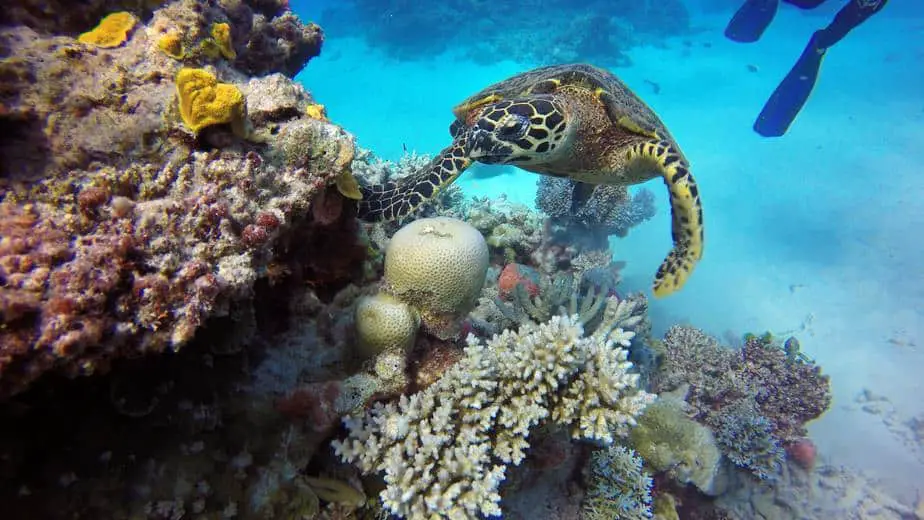
The Great Barrier Reef is located along the Queensland coast of northeast Australia. It’s expansive and stretches over 2,300 km (1,430 mi) long. It’s probably one of the top three places in the world people think about when they want to go scuba diving or snorkeling.
Scuba diving here can at times be difficult, however the risks are no more severe than elsewhere. It’s fair to say that the GBR is as safe or dangerous as you make it depending on your skill level and where you choose to dive. You have only yourself to blame if you do not heed the warning signs.
Diving in Australia is like diving anywhere else in the world; the dangers are nearly identical. Thus, the solution is also the same: adhere to your training, be sensible, and follow the dive guide and or local rules to stay safe.
The organizations responsible for maintaining safety in the GBR are constantly monitoring activities, proposing and enforcing safety rules, and educating divers on safety. Again, divers have to do their own part in determining risk. Tour operators and dive shops are more than happy to dispense their advice to you.
Since scuba diving certifications don’t expire, divers who haven’t dived in a long time should take a refresher course before heading out for a dive at the reef’s more advanced locations. This is an obvious example of managing your own safety. It doesn’t matter how skilled you were in the past, it’s possible your skills and your physique have deteriorated if you haven’t been maintaining them.
In a similar vein, if you choose to dive in one of the more remote sites situated some distance away from popular destinations, you should be more conservative in your dive. Should something go wrong, it will likely take longer for help to arrive.
We realize we haven’t provided much specifics, but that’s just due to the nature of the problems described. They are quite generic because they are the same problems you’d encounter anywhere else. Almost all risks can be completely avoided if you just dive sensibly and stay within your limits.
Dangerous marine life in Australia
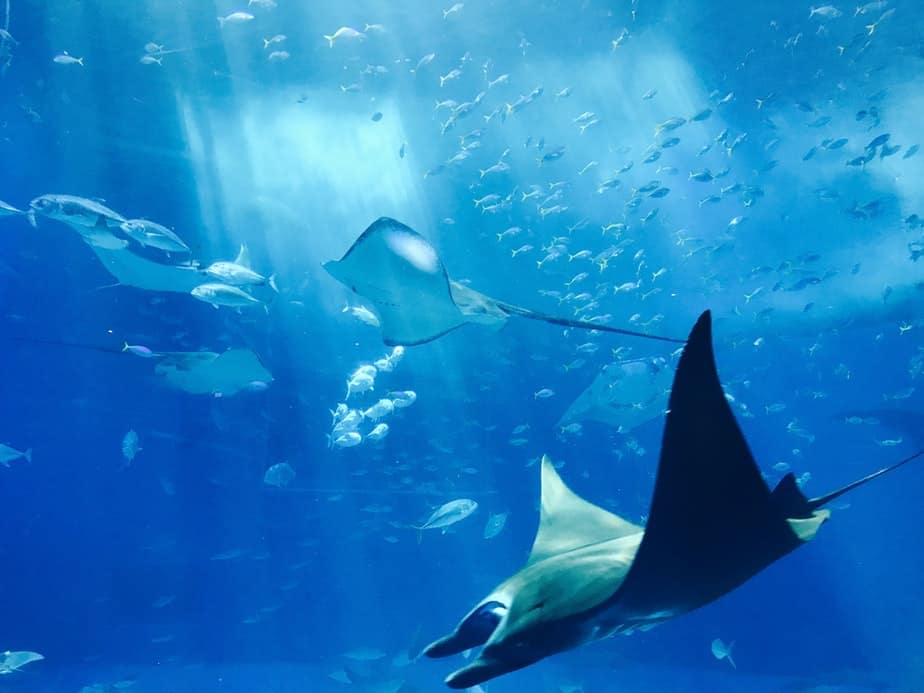
A good rule of thumb is to assume that all wild animals are dangerous. When you see one, the only thing you should be doing is to observe it from afar. Do not approach them, touch them, and definitely do not feed them. You’ll probably see signs telling you the same.
Just by following these simple rules, you can already prevent most dangerous wildlife encounters. Even the inanimate corals, which most people don’t think of as animals, should be respected. Do not touch or break off their branches for a souvenir. Corals can sting you and are sharp, so be extra careful around them.
In reality, most people are most concerned about larger animals like sharks. This might be hard to believe, but sharks actually are not interested in humans. We are not their usual prey and they tend to leave humans alone, particularly if we are in a group. They are definitely one animal you should not risk touching.
Ironically, the one of the most dangerous animals you should be worried about when scuba diving has nothing to do with the actual diving itself. Sometimes crocodiles can be spotted on beaches and reefs, and they can be quite aggressive. Keep an eye out for the seasonally changing local information and pay attention to what your tour guide says.
As for dangerous marine life you can potentially encounter on a dive, here are a few to keep an eye out for:
- Blue ringed octopus. The blue ringed octopus have yellow skin with blue-ring patterns which is what they are named after. They are generally docile and look very attractive. Octopuses tend to hide in crevices and use their chameleon-like skin to camouflage themselves. As harmless and beautiful as they look, they are actually one of the most venomous marine animals in the world. Their first instinct is to swim away when threatened, but if they feel backed into a corner, they will use their potent venom as a last resort.
- Cone snails. There are literally over 3,000 species of cone snails, and many of them are capable of delivering a venomous sting that can be deadly to humans. Unfortunately, it’s hard to differentiate which ones are venomous, so just assume all of them are. These snails generally do not attack humans, so as long as you keep your hands to yourself, you’ll be safe.
- Lionfish and stonefish. These particular fish have venomous barbs and spines (are you starting to notice a pattern?) that must never be touched. Stonefish are typically found in shallow water, so try not to touch the bottom. If the visibility is poor, you might not want to walk around haphazardly. If you have no choice but to walk on the bottom, then you should wear protective shoes and try to watch your step.
- Stingrays. Stingrays are majestic creatures, but they are also infamous for causing the death of Steve Irwin. Part-way along a stingray’s tail is a sharp barb that can easily pierce through a wetsuit and flesh, all the way to one’s internal organs. Not only that, but the barb is also venomous (at this point, you shouldn’t be surprised). The tail can stab hundreds of times in a matter of seconds, so do not try to approach a stingray from the back, ever.
- Sea snakes. Australia is home to 14 species of sea snakes. Like most marine life, they are typically peaceful if left alone. In fact, sightings while diving are very scarce. However, if you do see one, you should keep your distance. They may perceive your proximity as a provocation and bite you.
- Box jellyfish/Irukandji jellyfish. Depending on the season, you may encounter an army of box jellyfish or none at all. The “stinger season” typically occurs between the months of November and May, however you should double-check the local information before you visit. Getting stung by a jellyfish will cause a tingling, painful sensation. If you get stung too many times, it can be serious. Therefore, divers must wear full-body wetsuits, gloves, dive hood, and cover as much of their skin as possible.
- Sharks: Sharks get their own section below.
Special mention: sharks

Sharks get their own section not because they are something genuinely to be worried about, but because they have such a bad reputation from their portrayal in the media. As we mentioned, yes, there are indeed sharks in Australia. In fact, many scuba divers go to Australia because they want to swim with sharks.
Do these shark-seeking divers have a death wish? No. As we have repeatedly mentioned in our article on how often sharks attack scuba divers, statistically they are so unlikely to attack divers that you probably have a higher chance of dying traveling to Australia.
Consider the International Shark Attack File (ISAF) 2020 shark attack report, which reported only 129 shark attacks worldwide in 2020. This is factoring in all water sports, not just scuba diving. If you have any idea how many tens of millions of people head into the water each year, you’ll understand that 129 deaths, though tragic for the victims and their families, is statistically insignificant.
Of those 129 shark attacks, only 4% occurred to scuba divers (mathematically, that works out to 5 divers). On the other hand, 61% occurred to surfers, and 26% occurred to open water swimmers. So if you’re scared of shark attacks, you’re actually much better off diving compared to other water activities.
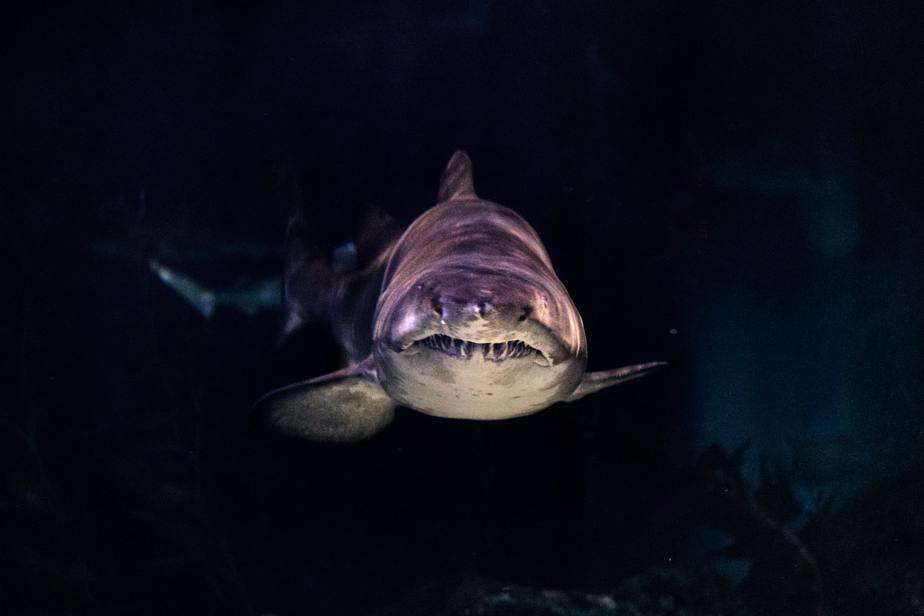
A better question would be: why don’t sharks attack divers? Don’t they know how utterly helpless we are in the water compared to them? We could make such an easy meal, yet sharks keep their distance.
There are many theories, the first of which is that sharks can’t figure us out. We are somewhat large, create bubbles, are quite noisy due to the aforementioned bubbles and clanging of our tanks, we often congregate together, and we don’t taste as good as what they usually eat. Humans are simply not on the shark’s menu.
One might even say that sharks are terrified of us, rather than the other way around. Typically, when a group of divers notice a shark, excitedly make noises and point at it, the shark will shy away and leave.
The most common sharks in Australia are blacktip reef sharks, leopard sharks, and wobbegongs. As long as you do not try to touch them, feed them, or provoke them, then they are not regarded as being dangerous to divers at all.
Dangerous dive sites in Australia
The Great Barrier Reef alone is reason enough to dive in Australia. However, there are other fantastic dive locations worthy of your time as well.
If your priority is staying safe, you should avoid sites that have a reputation for being dangerous. And if you do decide to go anyways, pay attention to the warning signs and follow correct safety procedures to the “T.”
For instance, the Shaft Sinkhole in Mount Gambier, South Australia, is a cave diving site that is infamous due to a few high profile deaths since the 70s. The entrance to this vast cave system is a narrow sinkhole shaft literally in the middle of a field, hence its name.
To safely enter, the diver and dive equipment needs to be lowered through the shaft. Once inside, cave divers can explore the series of interconnected caves using the network of passageways, descending as far down as 120 m deep.
The restrictions have only gotten tighter over the years. Now, you need to be vetted to determine whether you have the proper training and experience that meets the Cave Divers Association of Australia’s standards.
Parting words
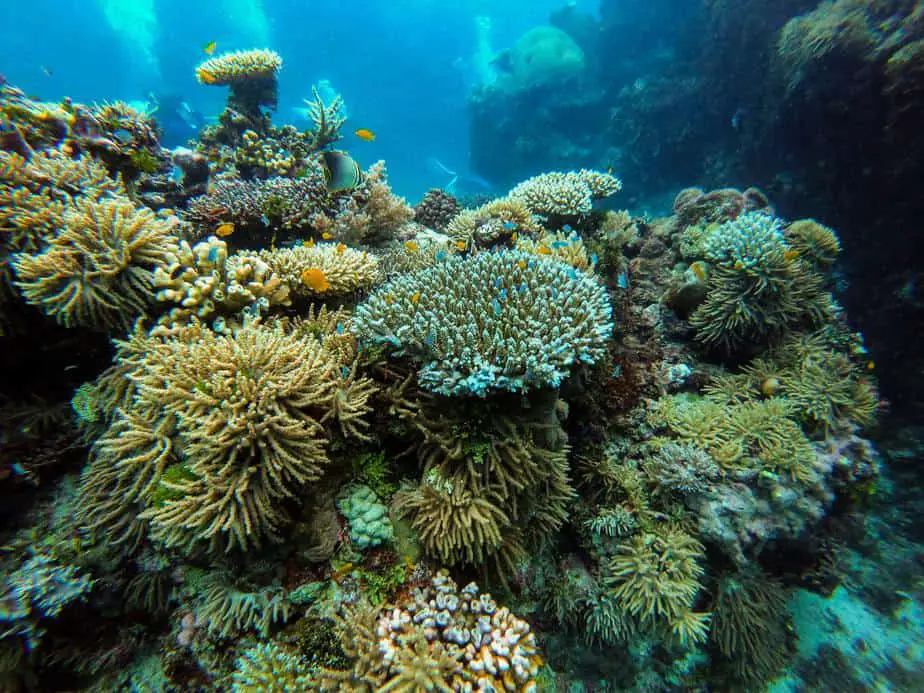
There’s a reason why Australia is world-renowned for its fine and diverse scuba diving locations, particularly in the Great Barrier Reef. Naturally, due to its reputation for exotic animals, many tourists are wondering if diving in Australia is as terrifying as dealing with its laundry list of deadly land animals.
Scuba diving is inherently risky as a leisure activity. If you really think about it, exploring a location where you cannot get easy access to air and surfacing too quickly can kill you, you have to be prepared for a certain amount of risk.
As with diving anywhere else in the world, if you don’t know how to scuba dive properly or take any unnecessary risks, then it can be dangerous. However, Australia, being one of the world’s most popular tourist destinations when it comes to water sports, has one of the most regulated diving industries with numerous safety regulations.
Dive operators, especially at highly popular tourist sites, need to be professional because they are under the scrutiny of the various authorities that regulate the diving industry. You’ll be hard-pressed to find one that doesn’t have an impeccable safety record.
Even Australia’s emergency services infrastructure is highly advanced, you are likely to receive aid promptly in remote areas. The same cannot be said for the emergency services in other countries which may be less developed.
Visitors to this lovely country should have peace of mind knowing that as long as they are diving sensibly, Australia is no more dangerous than any other famous international diving site, and in fact, might even be safer due to the efforts of the governing bodies. While it may seem like all of the creatures on land in Australia are trying to kill you, it seems the same cannot be said for its resident marine life.

